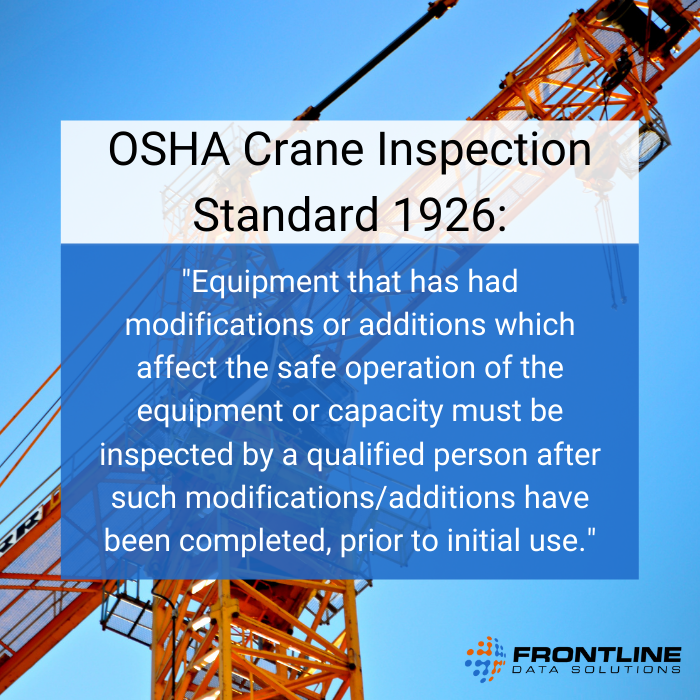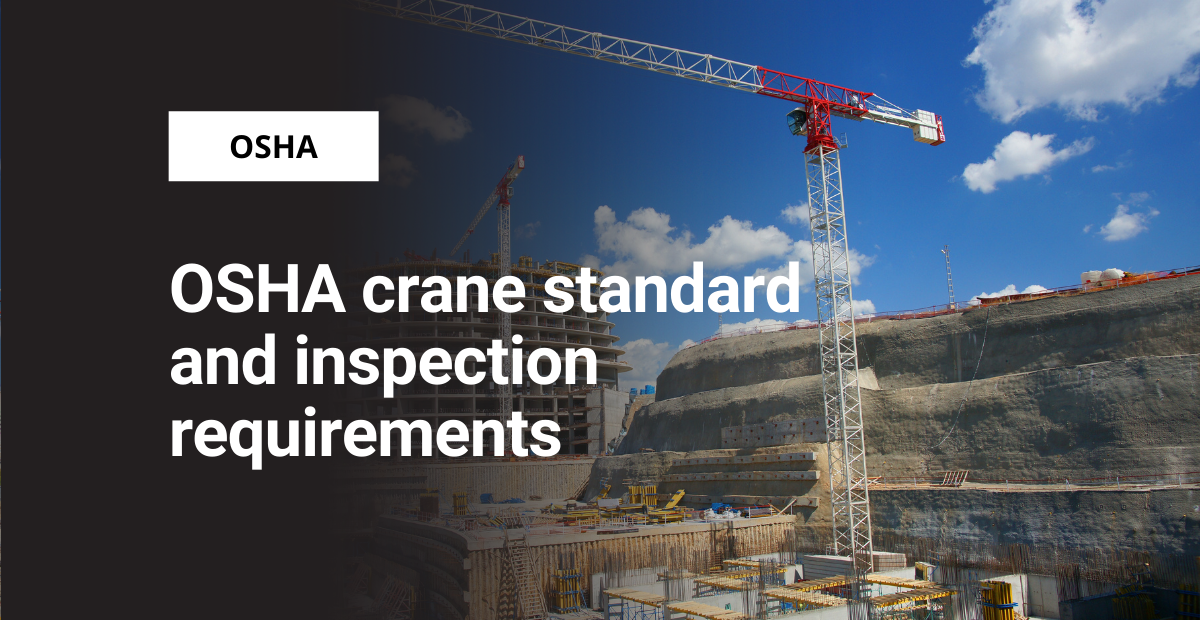OSHA’s annual crane inspection requirement is that you must complete an inspection at least once every 12 months from the date of the previous inspection. Aside from these mandatory inspections, you should also perform routine maintenance on all heavy machinery. Scheduling maintenance at regular intervals is a great way to not only meet OSHA’s standards but also to ensure the efficiency and longevity of all crane equipment.
OSHA crane safety standard
Modern crane safety practices stem from OSHA crane standard 1926 (Subpart CC). This detailed regulation covers the ins and outs of crane safety and provides guidelines for things like crane:
- Inspections
- Training
- Fall protection
- Maintenance and repair employee qualifications
- Equipment modifications
- Operation
- Signal requirements
- Design and construction
This standard also provides clarification on the types of modifications that call for an inspection. They include changes to:
- Braking systems
- Safety devices
- Operating mechanisms like levers, devices, and tools
- Structural components that carry loads
- Components of the control system
- Power plants
- Load hooks
The goal of the standard is to prevent common safety hazards related to crane operation, modification, and inspection. By regulating these inputs, companies can create safer, more standardized operations.
If you’re starting a new construction company, read the detailed crane and derrick OSHA standard in its entirety (look at Subpart CC specifically).
OSHA crane inspection requirements
Standard 1926 also outlines OSHA’s crane inspection requirements. Because cranes and derricks are complex pieces of machinery that require consistent oversight, inspections are necessary to maintain oversight on safety mechanisms, control systems, cables, joints, and more.
According to standard 1926.1412, inspections must:
- Be completed by a qualified individual
- Include a functional test of the crane
- Establish whether the organization needs to hire a registered professional engineer (RPE) to create guidelines for completing changes
- Demonstrate that all modifications are safe per manufacturer specifications
A major focus of this standard is the inspection of cranes and derricks that have undergone modifications. Even the slightest changes can have a major impact on worker safety if left unchecked. This regulation protects workers from fatal injuries that may result from crane safety accidents. Inspecting before putting a repaired or modified crane back into operation ensures that all changes have been done safely and correctly.
It’s important to note that no one can use the equipment until it has cleared the inspection requirements. The OSHA standard gives details about the inspection process. For more details, read the section on crane inspections here.

Documenting annual crane inspections
Documenting your annual crane inspections is essential for compliance. You should have a record of the following information:
- Inspection date, time, and location
- Inspector’s name, title, and contact information
- Log of all inspection checks
- Detailed description of findings
- List of corrective actions
Keep digital records of crane inspections either with a spreadsheet, shared file, or action tracking software. That way, it’ll be easy to find compliance information during an audit. Plus, you can refer to past inspection data to find patterns of reoccurring issues, oversights, etc.
While completing annual crane safety inspections is an OSHA requirement, it’s also just a good practice to follow regardless. During the offseason, when cranes and derricks are out of use, it’s equally important to perform regular maintenance and inspections. Not only does this prevent repair expenses, but it also reduces the chance of missing a major safety hazard.
As you find and correct issues, use this as an opportunity to eliminate hazards rather than just controlling them. The safer your equipment is, the safer your employees. By fulfilling OSHA’s crane inspection requirements, you’re improving conditions for everyone onsite.




